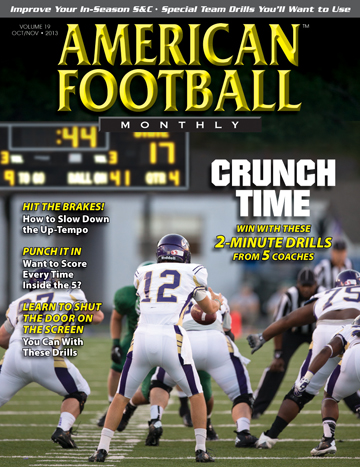Article CategoriesAFM Magazine
|
Drills to Perfect Your Pursuit of the Screen Pass.© More from this issueRelentless hustle and pursuit, along with proper angles and leverage, are keys to successfully defending the screen. We stress the importance of 11 players giving maximum effort running to the football every play. Accountability and repetition are keys to be successful in this point of emphasis. All 11 players are graded every game or scrimmage play to be held accountable. Our coaches confront and demand hustle and pursuit in practice repetitions. We invest time prior to our individual portion of practice to drill hustle and pursuit. We have a variety of pursuit drills that not only emphasize and give us crucial repetition at pursuit, but also work on other specific parts of our defense. They include:
|
|
|||||||
| HOME |
MAGAZINE |
SUBSCRIBE | ONLINE COLUMNISTS | COACHING VIDEOS |
Copyright 2026, AmericanFootballMonthly.com
All Rights Reserved





